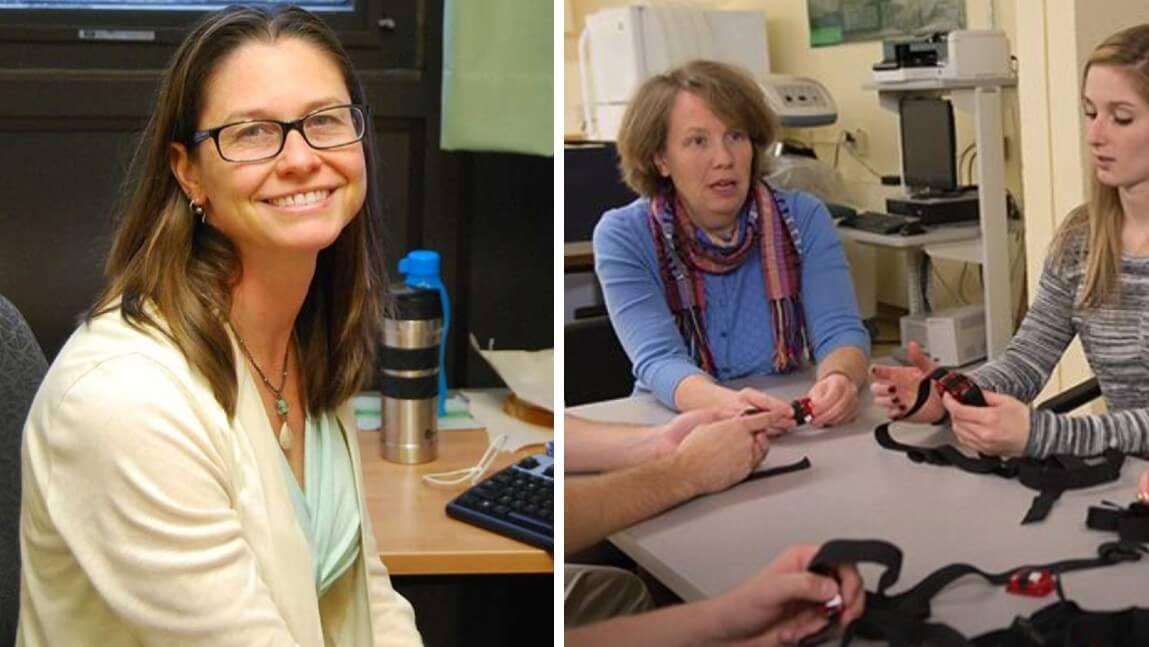What state has the highest percentage of elderly residents? If you guessed Florida or Arizona, traditional retirement retreats for older Americans, you wouldn’t be far from wrong.
But Nancy Gell, associate professor in the College of Nursing and Health Sciences, says Vermont is the second oldest state in the union, as measured by percentage of population over the age of 65. Only Maine has a higher percentage and Vermont is on track to claim the nation’s oldest title very soon.
“My interest in terms of healthy aging is around optimizing mobility and function, and reducing fall potential,” Gell says. It’s an important specialty because according to the Centers for Disease Control and Prevention (CDC), falls among older adults are the leading cause of both fatal and non-fatal injuries in the U.S., and the leading cause of emergency department visits for older adults.
Embarrassment is a natural response for adults when they fall, and they often don’t disclose falls to their doctor. But a fall is more consequential for older adults, Gell said. People who have suffered one fall are liable to fall again, and the average hospital cost per fall, according to the CDC, is over $30,000.
Gell is familiar with literature that describes the role of nutrition in helping patients recover from falls. She hadn’t read much about diet as a preventative measure. Then she co-presented at a workshop with Emily Tarleton, who worked as the bionutrition manager at the University of Vermont Clinical Research Center at the time (she is now an assistant professor at Northern Vermont University).
“Emily brought up her interest in the role of nutrition in fall risk and the fact that it was so understudied,” Gell said. “That’s when we decided to collaborate on projects that might bring more attention to prevention.”
Tarleton posited that perhaps the lack of study on nutrition as a fall risk was simply because malnutrition among older Vermonter wasn’t a problem. But they soon found that wasn’t the case.
“There actually is a high risk of malnutrition in this population and within that data we were able to a show relationship between nutrition and falls,” she said. “Most importantly, we found that poor nutrition was associated with a future fall.”
Their subsequent research, published this year in the The Journal of Nutrition, Health & Aging, studied over 2,000 Medicare beneficiaries in Vermont who had completed two consecutive years of health risk assessments. “Participants with high malnutrition risk had a 66% increase in odds of a new fall compared to those with low malnutrition risk,” the study concluded.
They also found that 37% of participants were at high malnutrition risk and 42% were classified as having “moderate malnutrition risk.”
Gell and Tarleton hypothesized that the rural character of Vermont life might be a factor in high fall rates, but data showed living in small, isolated towns wasn’t associated with greater likelihood of a fall in the next year.
The pair is now trying to close gaps in the research to better understand the relationship between rurality and malnutrition. There are several potential obstacles between elderly people and food insecurity: the lack of local, fresh foods, rising food prices, lack of transportation or physical difficulties in shopping.
Some find it difficult preparing meals, especially when they live alone and are cooking for just one person. Tarleton points out that older adults with chronic health conditions like diabetes can be confused about what food they can and can’t eat, and may end up eating sporadically or not at all.
Gell and Tarleton completed new surveys last year during the pandemic tries to get at these questions. They hope one result of their research is that diet will be included as a risk factor when older adults are medically evaluated. This latest work is funded by the Vermont Biomedical Research Network.
“We’re showing that nutritional status can be a predictor of falls but screening of malnutrition is not part of the fall risk assessment in the U.S.,” says Tarleton. “Hopefully this research can be used to deepen our understanding of the role nutrition plays.”
